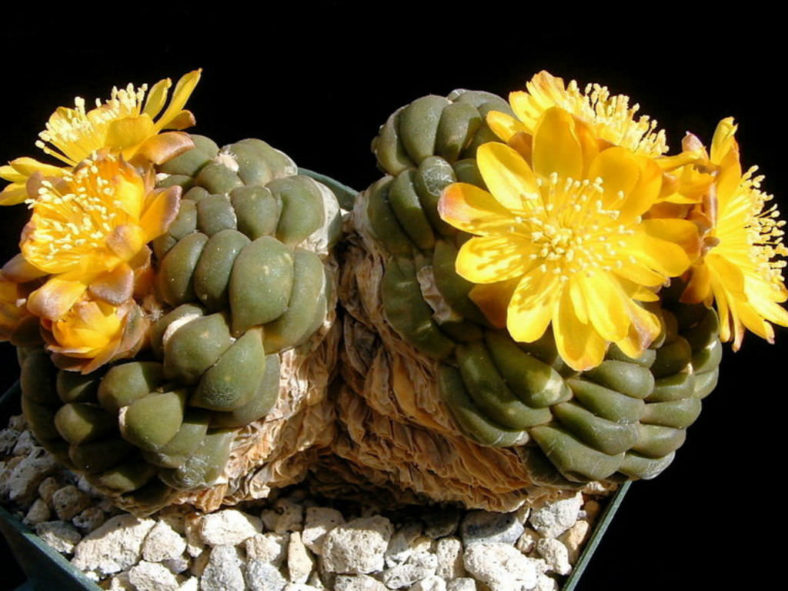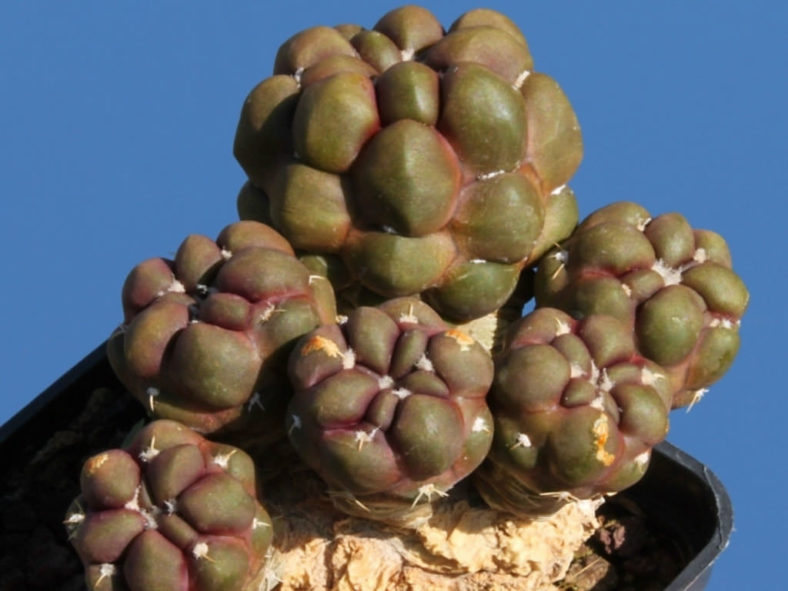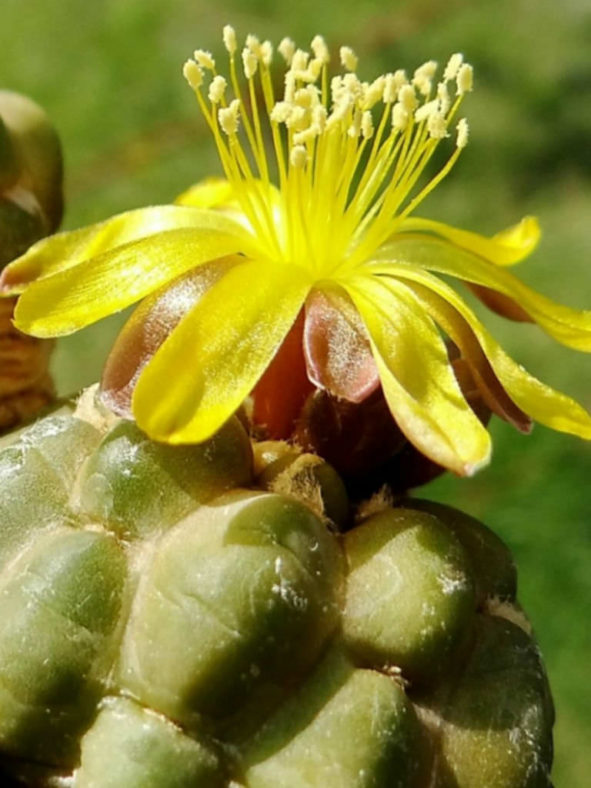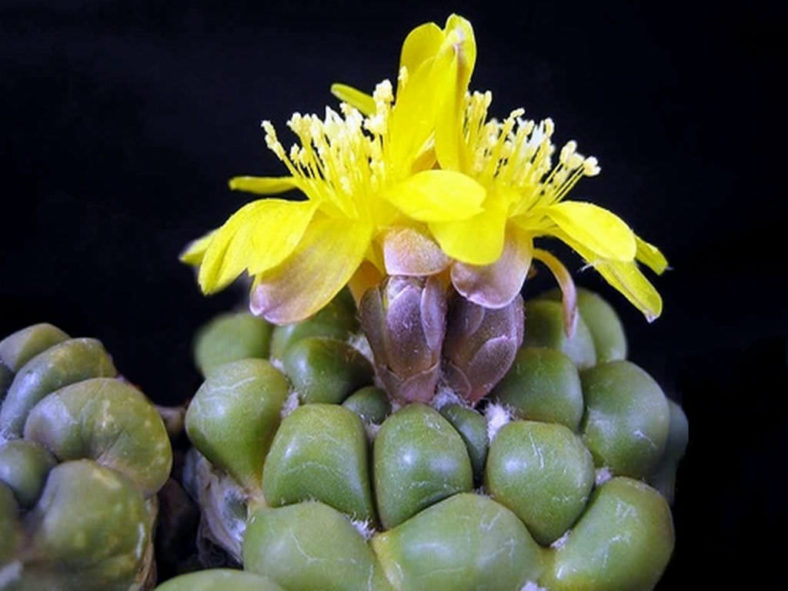Scientific Name
Rebutia cintia Hjertson
Synonym(s)
Cintia knizei, Copiapoa knizei, Weingartia cintia
Scientific Classification
Family: Cactaceae
Subfamily: Cactoideae
Tribe: Trichocereeae
Genus: Rebutia
Etymology
The specific epithet "cintia (SIN-tee-a)" refers to the Nor Cinti province of Bolivia.
Origin
Rebutia cintia is native to the high Andes of Bolivia. This species was first found by Karel Kniže in 1969 but not formally described until 1996 by Jan Řiha under the name Cintia knizei.
Description
Rebutia cintia, also known as Cintia knizei, is a dwarf cactus with globose stems that can vary in color depending on the season, amount of sun, and water, from olive-green to purple or brown. The stems can reach up to 2 inches (5 cm) in diameter. The tuberous carrot-like roots can grow up to 4 inches (10 cm) long. The areoles are woolly with no spines and sunken between the tubercles.
The yellow flowers appear in spring on the stem tip, reaching up to 1.6 inches (4 cm) in diameter.

Hardiness
USDA hardiness zones 9b to 11b: from 25 °F (−3.9 °C) to 50 °F (+10 °C).
How to Grow and Care
If you can grow cacti and succulents successfully, you can likely grow the popular Rebutias without too much trouble. Their water and light requirements are fairly typical for many cacti species, including a cooling period in the winter to promote better blooming. Watering should be done carefully, allowing the plant to almost dry out between waterings. The cactus mustn't be exposed to prolonged dampness and sitting water. Never let your cactus sit in a dish of water. Instead of propagating your offsets, let the plant grow in a large cluster for the best viewing. When it blooms, this will make a stunning display. Lastly, ensure fertilizer during the growing season for the best results.
Repot as needed, preferably during the warm season. To repot your Rebutia, ensure the soil is dry before repotting, then gently remove the pot. Knock away the old soil from the roots, removing any rotted or dead roots. Treat any cuts with a fungicide. Place the plant in its new pot and backfill it with potting soil, spreading the roots as you repot. Leave the plant dry for a week or so, then begin to water lightly to reduce the risk of root rot.
Learn more at How to Grow and Care for Rebutia.
Links
- Back to genus Rebutia
- Succupedia: Browse succulents by Scientific Name, Common Name, Genus, Family, USDA Hardiness Zone, Origin, or cacti by Genus
Photo Gallery
Click on a photo to see a larger version.


